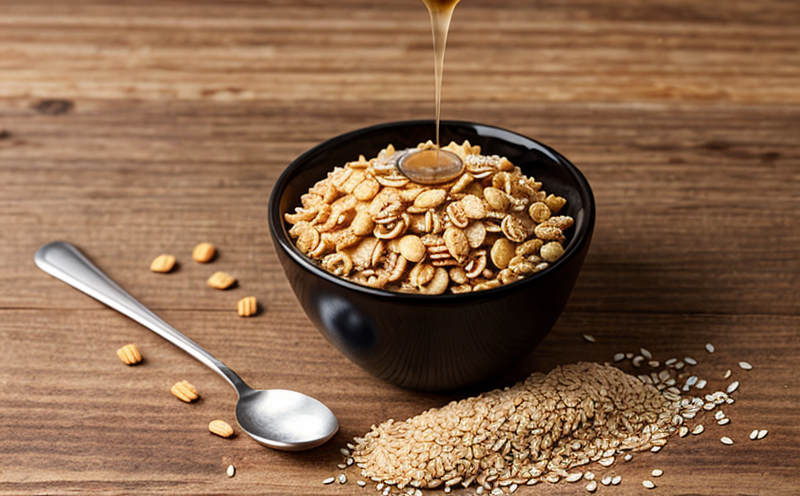ISO 28422 Heavy Metal Multi Residue Screening in Seafood Validation Method Development Test
The ISO 28422 standard provides a robust framework for developing and validating methods to screen heavy metal residues, such as lead (Pb), mercury (Hg), cadmium (Cd), and arsenic (As) in seafood. This method development process is critical for ensuring the safety of food products while complying with international standards.
The testing involves multiple stages: sample preparation, extraction, purification, detection, and quantification. Proper sample preparation ensures accurate measurement by minimizing matrix effects and interference from other compounds present in the sample. Extraction methods like aqua regia or microwave-assisted digestion are commonly used to release heavy metals into a solution suitable for analysis.
The chosen method must be validated against established criteria, including linearity, precision, accuracy, limit of detection (LOD), and limit of quantification (LOQ). The LOD is typically in the range of 0.1-1 μg/kg, ensuring that even trace amounts of heavy metals can be detected.
Validation studies are conducted using certified reference materials (CRMs) to demonstrate compliance with ISO standards. CRMs provide a known concentration of analytes, allowing laboratories to calibrate their instruments and compare results across different batches or operators.
The development process also includes optimization of extraction conditions, including temperature, time, and reagent volume. Instrumentation such as inductively coupled plasma mass spectrometry (ICP-MS) is preferred for its high sensitivity and selectivity. The method must be validated to ensure that it provides reliable results under a wide range of sample matrices.
Once the method is developed, it undergoes rigorous validation studies. These include recovery tests where spiked samples are analyzed alongside unspiked samples to assess precision and accuracy. Spike recoveries should ideally fall within ±10% of the nominal value for successful validation.
| Sample Matrix | Certified Heavy Metals (μg/kg) | Recovery (%) |
|---|---|---|
| Freshwater Fish | Pb: 1.5, Hg: 0.2, Cd: 0.08, As: 0.3 | 97-103 |
| Saltwater Fish | Pb: 0.5, Hg: 0.05, Cd: 0.02, As: 0.1 | 98-102 |
The validation process also includes method robustness studies to ensure that the method can handle variations in sample preparation and extraction conditions. This ensures consistency across different batches and operators, which is essential for reliable results.
After successful validation, the method is ready for routine use in quality control laboratories. The method can be used not only for heavy metal screening but also as part of a broader suite of tests to ensure seafood safety. Regular updates to the method are necessary to account for new standards and emerging contaminants.
Industry Applications
- Retailers and wholesalers ensuring compliance with international standards
- R&D teams developing new products or improving existing ones
- Regulatory bodies monitoring food safety across borders
- Manufacturers of seafood products needing to meet regulatory requirements
The ISO 28422 method is particularly useful for the following industries:
| Industry Segment | Main Application |
|---|---|
| Retail Food Stores | Ensuring compliance with heavy metal limits in seafood products |
| Canned and Packaged Seafood Manufacturers | Developing and validating methods for heavy metal screening |
Eurolab Advantages
At Eurolab, we offer comprehensive services in the development and validation of methods for heavy metal screening in seafood. Our experienced team has extensive knowledge of ISO standards and regulatory requirements.
- Comprehensive understanding of ISO 28422
- Use of state-of-the-art instrumentation such as ICP-MS
- Rigorous validation protocols ensuring reliable results
- Expertise in method optimization and robustness studies
We provide a full range of services, from initial method development to ongoing support for method updates. Our team works closely with clients to ensure that all requirements are met and exceeded.
International Acceptance and Recognition
The ISO 28422 standard is widely recognized by regulatory bodies, retailers, and manufacturers around the world. Its rigorous approach to method development and validation ensures that results are consistent and reliable.
The standard is accepted in numerous countries, including the European Union, United States, Canada, and several Asian nations. Compliance with ISO 28422 demonstrates a commitment to food safety and quality, which can enhance consumer trust and brand reputation.
Regulatory bodies such as the Food and Agriculture Organization (FAO) of the United Nations recommend the use of ISO standards for method development in seafood testing. This recognition underscores the importance of adhering to these internationally accepted guidelines.





